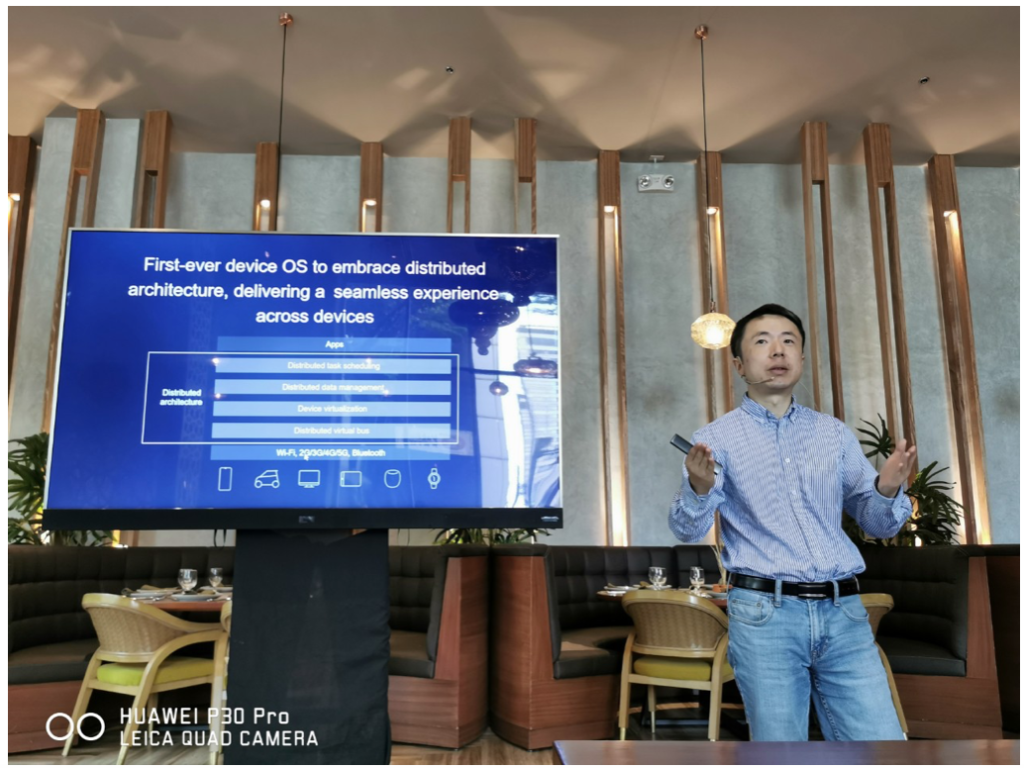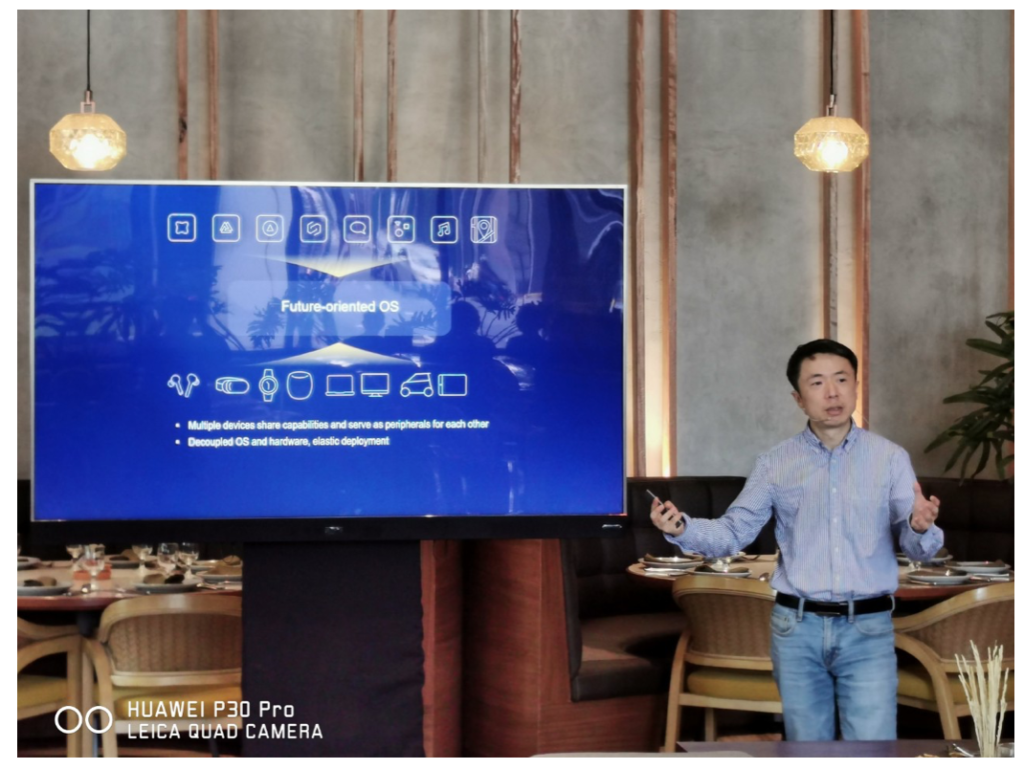Opening Filipinos to Wider and Better Technological Possibilities
On August 9, 2019, the newest HarmonyOS was launched in Dongguan, China during the HUAWEI Developer Conference 2019. Questions about this development were thrown here and there, so as part of HUAWEI’s campaign to introduce this new technological breakthrough, HUAWEI brought in Product Marketing Senior Manager, James Lu to facilitate an explainer workshop to select Philippine media. The session aims to send the bigger message across–that unlike other operating systems, the HarmonyOS gives users better and endless possibilities.
“Harmony OS is different from Android nor iOS. The functions of HarmonyOS are way beyond all of the current use of those available operating systems”, claims Lu. HarmonyOS is a new microkernel-based, distributed OS for all scenarios. Aligning hardware and ecosystems, and delivering a fully-connected, all-scenario, intelligent experience across devices. Which is mainly targeted to smart devices such as wearables, HUAWEI Vision, and head units.
As part of Huawei’s 5-to-10-year plan, the brand recognizes that users nowadays want better technology. Like how Richard Yu, CEO of Huawei’s Consumer Business Group, said during the HDC 2019, “We’re entering a day and age where people expect a holistic intelligent experience across all devices and scenarios. To support this, we felt it was important to have an operating system with improved cross-platform capabilities. We needed an OS that supports all scenarios, that can be used across a broad range of devices and platforms, and that can meet consumer demand for low latency and strong security.”
HUAWEI responds to the need for seamless connectivity way back when no one else has thought of working on it and a decade after comes the HarmonyOS.
Why Release HarmonyOS Now?
Huawei highlighted several reasons why this is the perfect time for the new OS. First, the rapid development of technologies such as 5G and AI has spurred the boom in IoT. Second, Huawei has made it clear that an all-scenario, intelligent life strategy will be its core strategy in the next 5 to 10 years. Third, there is no single OS today that can match the requirements for the 5G era. Therefore, launching a new OS is necessary for meeting the needs and coping with the challenges presented in the all-scenario era.
Advantages of HarmonyOS
1. Seamless: First-ever device OS with distributed architecture, delivering a seamless experience across devices
By adopting distributed architecture and distributed virtual bus technology, HarmonyOS offers a shared communications platform, distributed data management, distributed task scheduling, and virtual peripherals. With HarmonyOS, app developers won’t have to deal with the underlying technology for distributed apps, allowing them to focus on their own individual service logic. Developing distributed apps will be easier than ever before. Apps built on HarmonyOS can run on different devices while delivering a seamless, collaborative experience across all scenarios.
2. Smooth: Deterministic Latency Engine and high-performance IPC
HarmonyOS will address underperformance challenges with a Deterministic Latency Engine and high-performance Inter Process Communication (IPC). The Deterministic Latency Engine sets task execution priorities and time limits for scheduling in advance. Resources will gravitate toward tasks with higher priorities, reducing the response latency of apps by 25.7%. The microkernel can make IPC performance up to five times more efficient than existing systems.
3. Secure: Microkernel architecture that reshapes security and trustworthiness from the ground up
HarmonyOS uses a brand-new microkernel design that features enhanced security and low latency. This microkernel was designed to simplify kernel functions, implement as many system services as possible in user mode outside the kernel, and add mutual security protection. The microkernel itself provides only the most basic services like thread scheduling and IPC.
Harmony OS’s microkernel design uses formal verification methods to reshape security and trustworthiness from the ground up in a Trusted Execution Environment (TEE). Formal verification methods are an effective mathematical approach to validate system correctness from the source, while traditional verification methods, such as functional verification and attack simulation, are confined to limited scenarios. Formal methods, by contrast, can use data models to verify all software running paths.
HarmonyOS is the first OS to use formal verification in device TEE, significantly improving security. In addition, because the HarmonyOS microkernel has much less code (roughly one-thousandth the amount of the Linux kernel), the probability of attack is greatly reduced.
4. Unified: Multi-device IDE allows apps to be developed once and deployed across multiple devices
Powered by a multi-device IDE, multi-language unified compilation, and a distributed architecture kit, HarmonyOS can automatically adapt to different screen layout controls and interactions, and support both drag-and-drop control and preview-oriented visual programming. This allows developers to more efficiently build apps that run on multiple devices. With a multi-device IDE, developers can code their apps once and deploy them across multiple devices, creating a tightly integrated ecosystem across all user devices.
The HUAWEI ARK Compiler is the first static compiler that can perform on par with Android’s virtual machine, enabling developers to compile a broad range of advanced languages into machine code in a single, unified environment. By supporting unified compilation in multiple languages, the HUAWEI ARK Compiler will help developers greatly improve their productivity.






